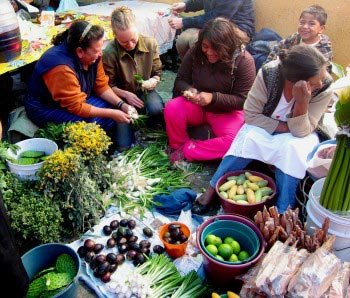 Emma Gaalaas Mullaney is a researcher studying gender and agriculture. She has served as a Youth Representative to the United Nations Convention on Biological Diversity and Commission on the Status of Women since 2010.
Emma Gaalaas Mullaney is a researcher studying gender and agriculture. She has served as a Youth Representative to the United Nations Convention on Biological Diversity and Commission on the Status of Women since 2010.
What is your field of research?
I am currently pursuing a dual-PhD in Geography and Women’s Studies at Pennsylvania State University. My dissertation centers on an ethnography of maize production in the eastern Central Highland region of Mexico. I lived in the region for over a year, conducting livelihood studies and oral histories with small-scale, commercially-oriented maize farmers in the Amecameca Valley, and with agricultural extension technicians and scientific researchers working in the nearby Texcoco Valley.
How does gender figure into your research?
My research engages gender in multiple ways. For example, I work closely with farming households and analyze the gendered divisions of labor and decision-making involved in agricultural production. I conducted the oral histories and participatory observation with both female and male members of a given family who are involved in different aspect of maize cultivation, use, and marketing. I also work with both female and male agricultural extension agents and scientists, examining commonalities and differences in their work experiences and practices. I am interested in how gender interacts with other forms of social difference to shape our work and our everyday lives.
What drew you to this work?
I was raised in the rural Midwest (United States), and my extended family has grown corn and soybeans in south-central Wisconsin for generations. The lived experiences of those who work in agriculture has always been a deep interest of mine. I have found that paying close attention to what’s going on with food producers – or with farmers who no longer produce food for human consumption, as is the case for corn growers in the United States – can yield important insight into the strengths and failings of our society. Over the years, as my interests in agriculture and social justice have taken me through many different spaces of formal education, policy negotiation, and scholarly debate, I often gain the most inspiration and understanding while hanging out in fields, in kitchens, and in street markets. Ultimately, my work as a researcher is guided by and accountable to what’s happening on the farm.
When you were gathering the oral histories did certain themes or consistencies emerge?
The oral histories offer rich detail into the livelihoods of different actors and the challenges they face in their daily work routines. As these narratives make abundantly clear, each of the farmers, extension agents, and researchers with whom I spoke is an expert in her or his field. Moreover, they all expressed a high degree of ingenuity and innovation in their work, though this creativity was not necessarily rewarded by their respective institutions. The oral histories also highlighted the gendered divisions of labor among these agricultural workers. Though both women and men worked in leading positions – whether as farmers and maize vendors, as directors of extension teams, or as heads of research departments – the women consistently faced greater risks and uncertainties in their job. In every case I encountered, women took primary responsibility for the household management and decision-making that fell outside of their official job (childcare, bills, etc), putting them in a more highly pressured and less predictable position than their male counterparts. Women were also more likely to find their innovative ideas and contributions dismissed by colleagues on a regular basis, and many described feeling consistently like an outsider in their own work environment.
When you were gathering the oral histories what surprised you?
I did not expect to find such dramatic differences in the level of authority and control that women had over their own work among farming households as compared to women working as extension agents or scientific researchers. Though strict gender roles are perhaps more obvious in the rural farming communities of the Amecameca Valley – where men take charge of the planting, harvesting, and other fieldwork and women handle much of the food preparation, seed selection, and selling of maize in regional street markets – women in these communities are the undisputed experts in the work that they do, which grants them a great deal of space for creative problem solving and risk management on behalf of their family and the local maize economy. In contrast, women working as agricultural technicians, engineers, and researchers are in an environment where gender equality is an explicit priority, but where the standard worker in their position is, and has historically been, male. These women described finding themselves competing for recognition in a setting that often undervalues their individual insights and capabilities.
Do you think there are misconceptions about the research you’ve chosen to pursue?
Well, judging by a common response to my academic affiliation, many people mistakenly assume that, since I come from a Women’s Studies Department, I must begin my research by looking around for women. In fact, I begin my research by asking how particular agricultural systems work, and who is empowered or excluded by these systems. Gender is a force that shapes the agricultural practices and opportunities of both women and men around the world, and it is therefore necessary that I am well trained in gender analysis in order to ask the questions that I do. Gender, interacting with other forms of social difference, dictates who does what kind of work, whether that work is recognized or valued, who has access to resources such as land and credit, and who is allowed to speak with authority on a given subject. Understanding how gender functions is therefore essential to understanding how agriculture is happening and how to improve it. This is true even, perhaps especially, when I walk onto a cornfield, or into an office or lab and encounter only men.
Generally speaking, what are the conclusions your research revealed?
Given that I am still in the process of analyzing data from my dissertation research, I have not yet finished drawing conclusions about maize production in the eastern Central Highlands and its implications for development and biodiversity conservation. At the same time, there are clear themes that have emerged over the course of my fieldwork and which resonate with existing interdisciplinary research. By far the most prominent are the interdependence of innovation and diversity, and their combined importance in agricultural production. Diversity, in terms of maize germplasm, cultivation strategies, and economic systems, is both a resource for and product of innovation in agricultural production, and is a primary source of resilience for small-scale farming households in the Amecameca Valley. A diverse set of perspectives, specialties, and lived experiences is also an obvious source of creativity and innovation among agricultural extension agents and scientific researchers. My research highlights that the strongest and most productive work environments are those that foster these forms of diversification.
What did you discover about gender and agriculture in Mexico?
The most important lessons that I learned about gender and agriculture, after over a year of fieldwork in Mexico’s Central Highlands, are for the most part not new discoveries at all. Decades and decades of extensive research has shown that gender is not merely one social factor among many, one that may or may not be relevant in a given situation. Rather, gender is a dominant social institution that is guaranteed to play a role in shaping agricultural outcomes, even though this process takes many different forms in different places. That Mexico, along with countries around the world, including the United States, currently has such a high degree of gender inequality has devastating consequences for those whose work is ignored or undervalued, and for agricultural production as a whole. Perhaps the new lesson offered by my research is that these very old patterns of inequality still persist today.
What types of changes (policy, research, etc.) do you think would help women and families in Mexico?
There must be public accountability for gender inequality and violence. The different types of gender injustice occurring in Mexico today are not equivalent, but invisible women farmers, gender discrimination in the workplace, and femicide are all products of a society that systematically devalues women’s work and their lives. This is not a problem that is caused by individuals acting alone, nor is it one that can be solved at the individual level; public policy must be held responsible for the fact that gender inequality continues to increase in the face of economic restructuring and global climate change. One important starting point, that is also an important part of any ongoing solution, would be for researchers and policymakers alike to listen carefully to the many women who are already struggling for change.
Finally, I’d like to express my heartfelt thanks to everyone who has worked with me in my research. I am indebted to all the farmers, extension agents, and researchers who graciously allowed me to interview them and to poke my nose into their lives. They do such important, inspiring work, and I look forward to building on these relationships in future research.
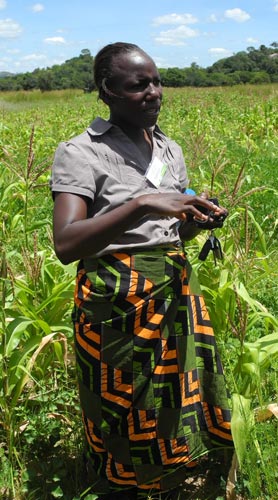
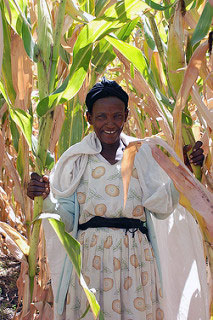 The Nutritious Maize for Ethiopia (NuME) aims to develop and promote quality protein maize (QPM) in the major maize growing areas of Ethiopia, including the highlands and the dry lands, to improve nutritional status of children. The project has a strong gender component, ensuring women’s full participation in all activities and equal share of benefits, which was discussed during a Gender Analysis and Strategy workshop at the
The Nutritious Maize for Ethiopia (NuME) aims to develop and promote quality protein maize (QPM) in the major maize growing areas of Ethiopia, including the highlands and the dry lands, to improve nutritional status of children. The project has a strong gender component, ensuring women’s full participation in all activities and equal share of benefits, which was discussed during a Gender Analysis and Strategy workshop at the 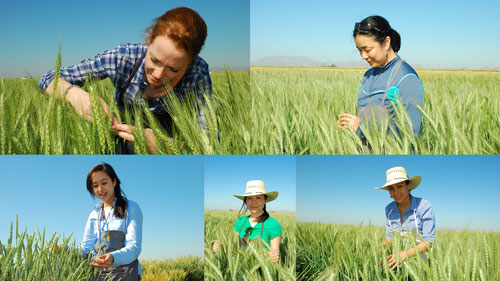
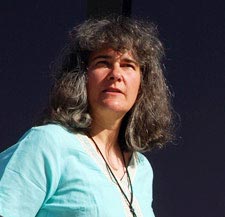 Marianne started her career with CIMMYT as a post-doctoral fellow in 1994 working in Maize Physiology to develop varieties tolerant to low soil fertility and drought. She was based at the CIMMYT office in Zimbabwe during 1996-2004, after which she was appointed Director of the Maize Program, based in Nairobi. In 2009 Marianne became the DDG-Research. In that capacity, she led the development of the CGIAR research programs for maize and wheat.
Marianne started her career with CIMMYT as a post-doctoral fellow in 1994 working in Maize Physiology to develop varieties tolerant to low soil fertility and drought. She was based at the CIMMYT office in Zimbabwe during 1996-2004, after which she was appointed Director of the Maize Program, based in Nairobi. In 2009 Marianne became the DDG-Research. In that capacity, she led the development of the CGIAR research programs for maize and wheat. Emma Gaalaas Mullaney is a researcher studying gender and agriculture. She has served as a Youth Representative to the United Nations Convention on Biological Diversity and Commission on the Status of Women since 2010.
Emma Gaalaas Mullaney is a researcher studying gender and agriculture. She has served as a Youth Representative to the United Nations Convention on Biological Diversity and Commission on the Status of Women since 2010.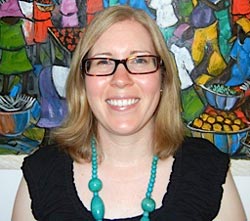 Nicole Mason is an assistant professor of International Development at the Department of Agricultural, Food, and Resource Economics at Michigan State University.
Nicole Mason is an assistant professor of International Development at the Department of Agricultural, Food, and Resource Economics at Michigan State University.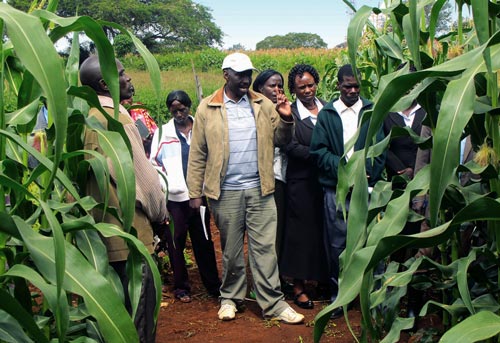 Gender mainstreaming in agricultural development is on the agenda of national governments and the international development community (for more information on CIMMYT and gender mainstreaming see “
Gender mainstreaming in agricultural development is on the agenda of national governments and the international development community (for more information on CIMMYT and gender mainstreaming see “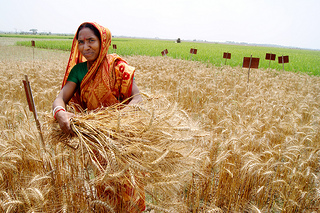
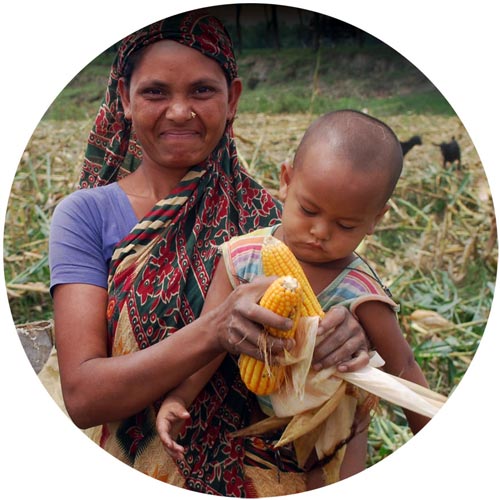
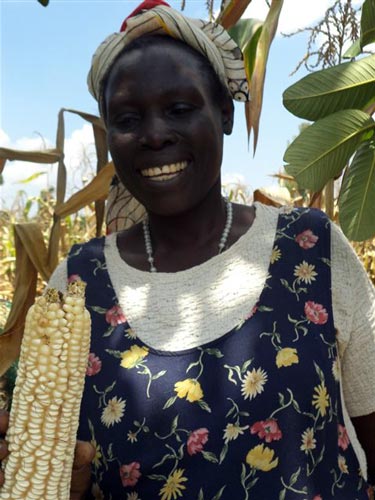 “Women are a key part of the mainstream in agriculture, yet they face formidable obstacles,” said CIMMYT gender and development specialist Vongai Kandiwa during a recent seminar in Nairobi, Kenya. Vongai was speaking on the importance of having a strategy to put men and women’s concerns and experiences at the centre of research design, implementation, monitoring, and evaluation. This involves looking at the socioeconomic settings of men and women to ensure that they benefit equally – often referred to as “gender mainstreaming.” The seminar was attended by colleagues working on various aspects of maize technology development, production, and dissemination. “By closing the gap in access to technology between men and women, we could increase productivity by 30%,” said Vongai, referring to the
“Women are a key part of the mainstream in agriculture, yet they face formidable obstacles,” said CIMMYT gender and development specialist Vongai Kandiwa during a recent seminar in Nairobi, Kenya. Vongai was speaking on the importance of having a strategy to put men and women’s concerns and experiences at the centre of research design, implementation, monitoring, and evaluation. This involves looking at the socioeconomic settings of men and women to ensure that they benefit equally – often referred to as “gender mainstreaming.” The seminar was attended by colleagues working on various aspects of maize technology development, production, and dissemination. “By closing the gap in access to technology between men and women, we could increase productivity by 30%,” said Vongai, referring to the 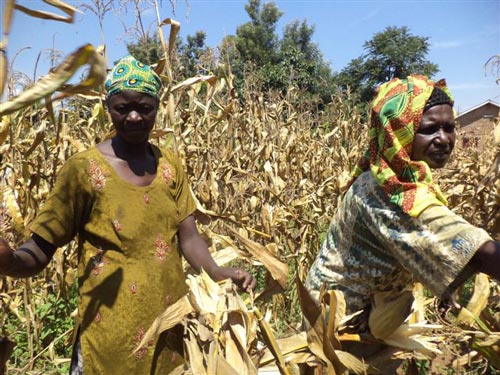 Paying particular attention to research innovations that would reduce the drudgery of farm work for women is also important, highlighted the global maize program director B.M. Prasanna. Prasanna pointed to quality protein maize (QPM) as a product developed with the nutrition needs of end users—and particularly women— in mind. QPM has increased amounts of lysine and tryptophan, important amino acids which improve nutrition. Prasanna also pointed out the promise of pesticide resistant maize that would reduce the burden of weeding for women who often provide most of the farm labor.
Paying particular attention to research innovations that would reduce the drudgery of farm work for women is also important, highlighted the global maize program director B.M. Prasanna. Prasanna pointed to quality protein maize (QPM) as a product developed with the nutrition needs of end users—and particularly women— in mind. QPM has increased amounts of lysine and tryptophan, important amino acids which improve nutrition. Prasanna also pointed out the promise of pesticide resistant maize that would reduce the burden of weeding for women who often provide most of the farm labor.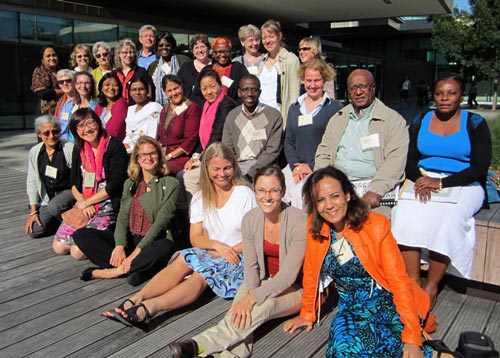 “The workshop was a great opportunity to share ideas and lessons learned, to exchange concepts of different gender strategies, as well as to discuss the latest gender-related research methods,” said Beuchelt. The workshop identified four themes for cross-program research on gender and agriculture: (1) engendering agricultural value chains; (2) gender-transformative approaches; (3) gender and technology adoption and diffusion; and (4) gender and nutrition. The participants also agreed upon a shared set of gender-responsive research outcomes that can be jointly monitored to assess progress towards CGIAR System Level Outcomes. Furthermore, they discussed how to measure these outcomes and agreed to continue collaboration on the development and measurement of a shared set of genderresponsive indicators.
“The workshop was a great opportunity to share ideas and lessons learned, to exchange concepts of different gender strategies, as well as to discuss the latest gender-related research methods,” said Beuchelt. The workshop identified four themes for cross-program research on gender and agriculture: (1) engendering agricultural value chains; (2) gender-transformative approaches; (3) gender and technology adoption and diffusion; and (4) gender and nutrition. The participants also agreed upon a shared set of gender-responsive research outcomes that can be jointly monitored to assess progress towards CGIAR System Level Outcomes. Furthermore, they discussed how to measure these outcomes and agreed to continue collaboration on the development and measurement of a shared set of genderresponsive indicators.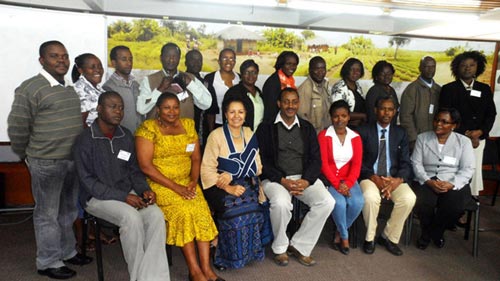
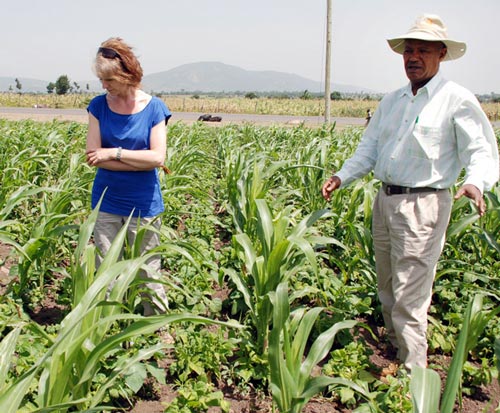 While highlighting that the work she was doing was still ongoing, Diana pointed out key strengths of the DTMA project from her assessment. “DTMA and all project personnel recognize the need to do this because it is generally acknowledged that approximately 70 percent of agricultural labor in sub-Saharan countries is provided by women,” says Diana. “Since women also play a central role in the welfare of household members and the community, understanding how drought tolerant technologies affect them is crucial to defining the impact of DTMA on poor farmers. Amongst many of the research counterparts, both public and private, there is recognition of the significance of women in agricultural systems,” she observes.
While highlighting that the work she was doing was still ongoing, Diana pointed out key strengths of the DTMA project from her assessment. “DTMA and all project personnel recognize the need to do this because it is generally acknowledged that approximately 70 percent of agricultural labor in sub-Saharan countries is provided by women,” says Diana. “Since women also play a central role in the welfare of household members and the community, understanding how drought tolerant technologies affect them is crucial to defining the impact of DTMA on poor farmers. Amongst many of the research counterparts, both public and private, there is recognition of the significance of women in agricultural systems,” she observes.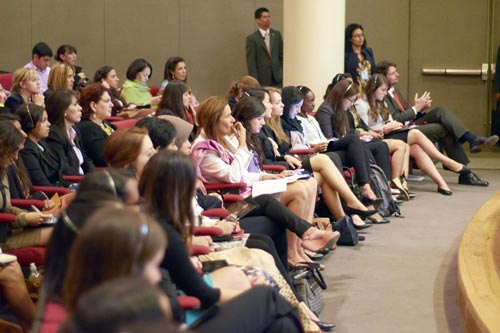 From 28 to 30 May, Mexico City held the G(irls) 20 Summit, a meeting in which 20 outstanding youths aged 18 to 20 represented each of the G20 countries, the African Union, and the European Union. This year, the priority issues for discussion and analysis were the role of women in agriculture and gender-based violence. CIMMYT was represented by Karen García, executive director of MasAgro, who shared some of her thoughts with the delegates on the role that science and technology can play in the development of rural women’s productive capacity.
From 28 to 30 May, Mexico City held the G(irls) 20 Summit, a meeting in which 20 outstanding youths aged 18 to 20 represented each of the G20 countries, the African Union, and the European Union. This year, the priority issues for discussion and analysis were the role of women in agriculture and gender-based violence. CIMMYT was represented by Karen García, executive director of MasAgro, who shared some of her thoughts with the delegates on the role that science and technology can play in the development of rural women’s productive capacity.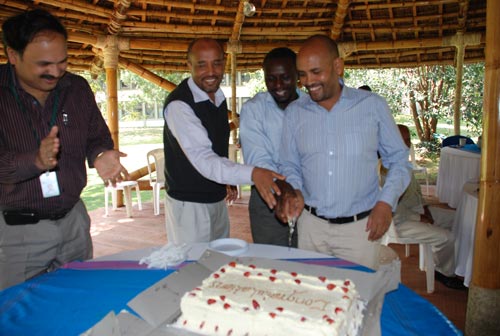 To share the good news, the Socioeconomics program hosted a get-together with the team in Nairobi, Kenya. During the cake cutting ceremony, the best gender paper award was dedicated to women farmers from Embu and Kakamega in Kenya’s Eastern and Western Provinces, where the data was collected. The Nairobi team also took the opportunity to initiate monthly seminars in order to share research findings hosted by the Global Maize Program and the Socioeconomics program and promote regular interaction among the team. The program directors, Bekele Shiferaw and B. M. Prasanna nominated Dan Makumbi, Hugo De Groote, Sika Gbegbelegbe, Fred Kanampiu, and Sarah Kibera, to form the organizing committee for the seminars.
To share the good news, the Socioeconomics program hosted a get-together with the team in Nairobi, Kenya. During the cake cutting ceremony, the best gender paper award was dedicated to women farmers from Embu and Kakamega in Kenya’s Eastern and Western Provinces, where the data was collected. The Nairobi team also took the opportunity to initiate monthly seminars in order to share research findings hosted by the Global Maize Program and the Socioeconomics program and promote regular interaction among the team. The program directors, Bekele Shiferaw and B. M. Prasanna nominated Dan Makumbi, Hugo De Groote, Sika Gbegbelegbe, Fred Kanampiu, and Sarah Kibera, to form the organizing committee for the seminars.